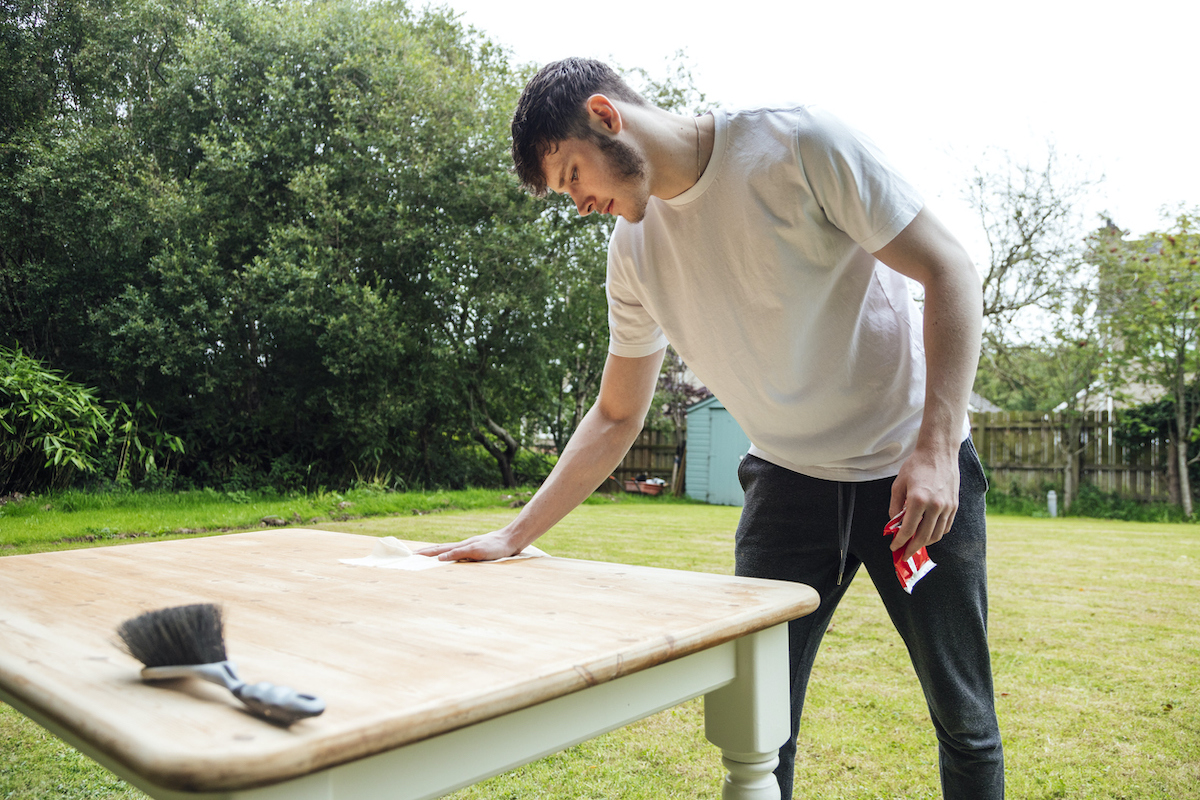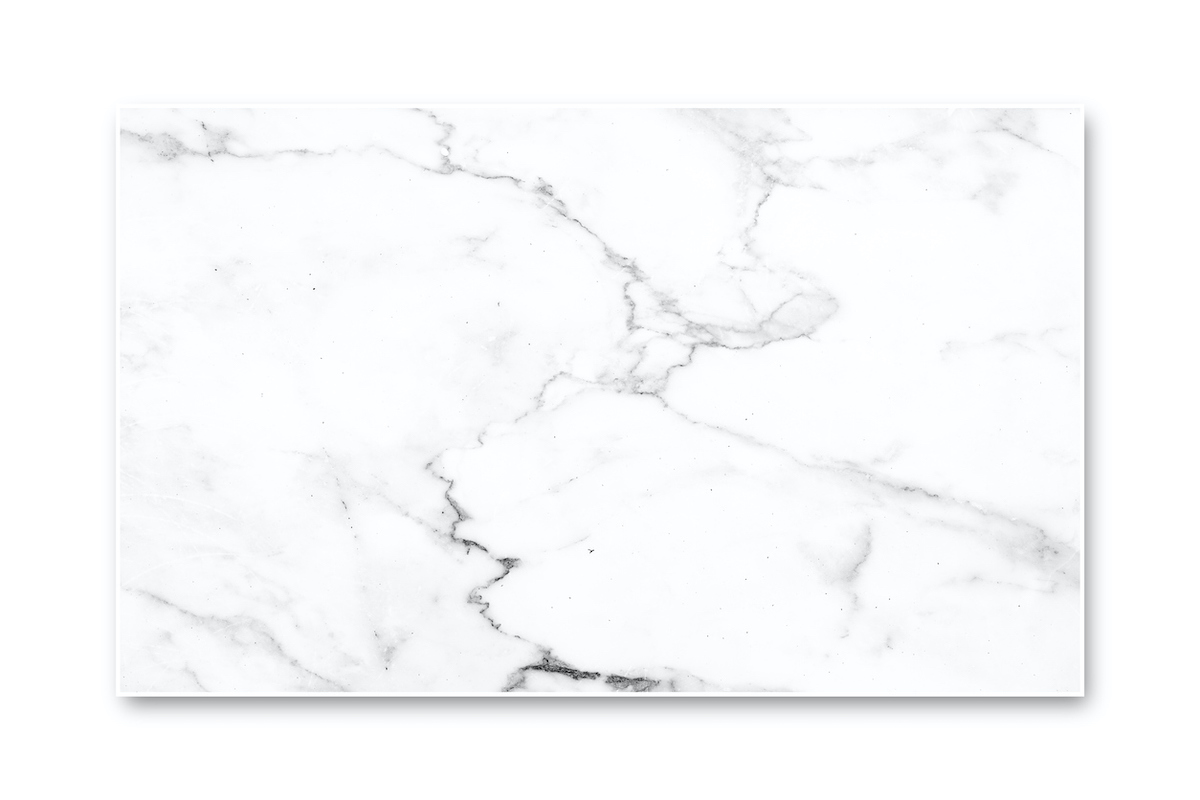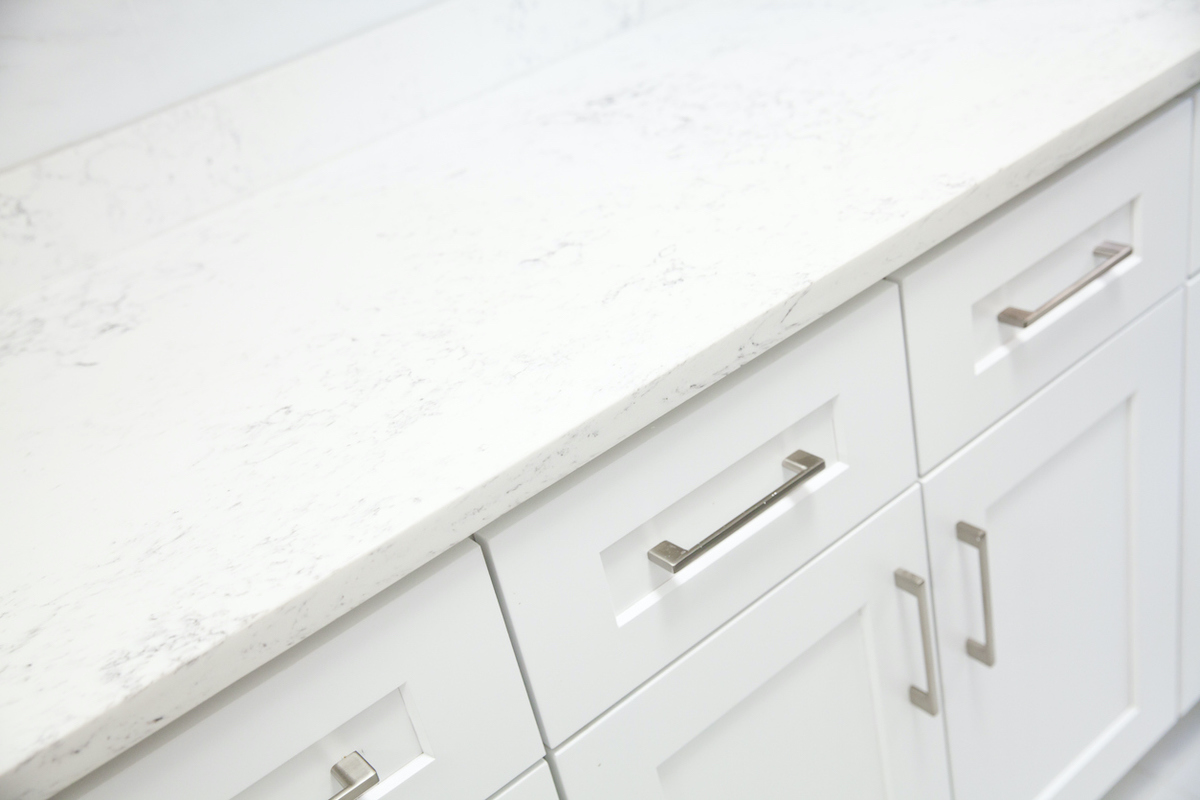We may earn revenue from the products available on this page and participate in affiliate programs. Learn More ›
Hacks for transforming an old, outdated item into something stylish and sleek always piques the interest of home improvers. Add significant money savings into the mix and the idea just might go viral! The newest cheap home upgrade trend is faux marble painting—a project that’s sweeping social media for its incredible impact and DIY-friendliness. One TikTok user, Melissa Mondragon, went viral for her rendition of the painting technique, sharing in a video how she transformed her dated granite kitchen countertop into one that looks like chic Carrara marble. But before you set out to try this trend for yourself, take a look at the following things to consider first.
Prepping the Surface
Correct surface prep is a crucial component in faux marble painting, especially when it comes to countertops. Who wants to complete a beautiful transformation only to have the paint lift off the surface the first time you wipe up a spill?! Be sure to research how to prep the surface material you plan to paint over, and use primer and paint products designed for that material as well.
Mondragon, for instance, painted over a granite countertop. To prep, she and her husband started by deep-cleaning the surface; then they applied a primer to seal the stone and create the best possible paint adhesion. They waited until the next day before applying the base coat of paint for their faux marble project.
For painting wood, surface prep usually requires sanding to remove the old finish and smooth out imperfections; then using a damp cloth to wipe off the dust before applying primer. For painting plastic, it’s recommended to use a primer specifically formulated to adhere to the slick, often flexible surface.
RELATED: The 8 Best Paint Primers for Indoor, Outdoor, and General Use

Practice! Practice! Practice!
While imperfections make for a more realistic marble effect, practicing the painting technique on some scrap material before applying it to the actual surface you want to update is strongly recommended. Also, a trip to your local tile store would be beneficial to see what real marble looks like up close and personal.
Practice painting thick and thin, precise and blurred veins alike in different colors (gray, brown, black, white, etc.) to see what color and shape combinations you like best. Some DIYers dilute the veining paints slightly to make them easier to work with.
How to Achieve the Faux Marble Paint Effect
Once the surface has been prepped, primed, and a base color has been chosen and applied, the next step is to create layers of veining using your colors of choice, various sizes of paint brushes, a feather (optional), a spray bottle with water, and a sea sponge.
Working in sections, simply paint squiggly lines along the surface; then spritz them lightly with water (optional) and use a damp sea sponge to blur out the brush strokes. Allow each layer to dry and repeat this process to create depth and the desired look you’re going for. When you’re happy with it, allow the surface to dry completely.

RELATED: How to Clean Paint Brushes the Right Way
Finish With Polyurethane
For surfaces like kitchen countertops and bathroom vanity tops that frequently come into contact with water, apply two coats of clear, water-based polyurethane with a gloss or satin finish for durability and to achieve the polished look of real marble. Be sure to allow at least 24 hours for the surface to completely dry before using it.
For surfaces that don’t require as much durability, such as a side table, buffing on a couple of coats of paste wax will also create the desired shine for the faux marble paint effect. But you’ll need to reapply the wax about once a year.

